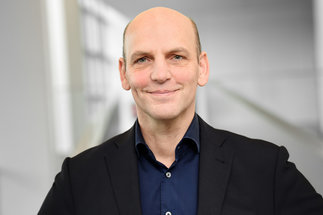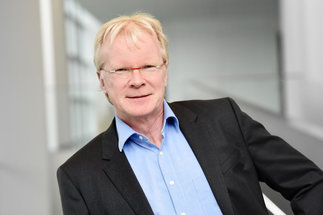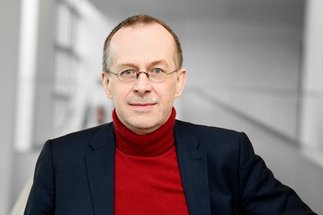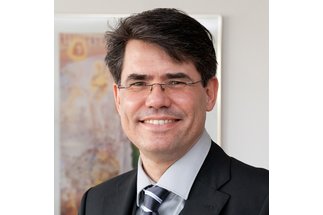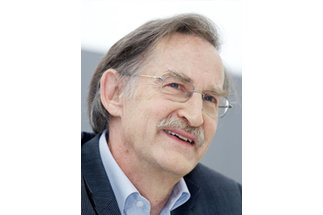Research at the Max-Planck-Institut für Kohlenforschung
The Max-Planck-Institut für Kohlenforschung has been conducting basic chemical research for over 100 years. Following its foundation in 1914, numerous chemical discoveries of historical significance have been made at the institute. The major achievement of the early years of coal research was the invention of the Fischer-Tropsch process by Franz Fischer and his co-workers, which allows mineral coal to be transformed into transportable fuels, such as gasoline or diesel oil.
After the appointment of Karl Ziegler as director of the institute in 1943, research efforts were primarily directed towards organometallic chemistry. Among the numerous important developments, the polymerization of ethylene or propylene via “Ziegler-Natta catalysis” stands out and was rewarded with the Nobel prize to Karl Ziegler in 1963. Another milestone was the cyclooligomerization of 1,3-butadiene to carbocycles by Günther Wilke (Ziegler’s successor) and his co-workers.
Today, the institute consists of five scientific departments, each headed by a director. About 370 students and employees from all over the world are dedicated to basic chemical research with a focus on catalysis. They are supported by service groups that provide state-of-the-art analytics, IT and technology.
Here you can find some more detailed information:
Research in the Ritter group focuses on the development of novel reaction chemistry. We seek to discover molecular structure and reactivity that can contribute to interdisciplinary solutions for challenges in science. The lab focuses on synthetic organic and organometallic chemistry, complex molecule synthesis, and mechanistic studies to develop practical access to molecules of interest in catalysis, medicine, and materials.
[more]
Our group focuses on the development of new catalysis concepts within the areas of organocatalysis, transition metal catalysis, and, to some extent, biocatalysis. Since 1999, the List-group concentrates on enantioselective organocatalysis as a fundamental approach complementing biocatalysis and transition metal catalysis. We have a profound interest in developing “new reactions”, designing and identifying new principles for the development of organocatalysts, expanding the scope of already developed catalysts such as proline, using organocatalysis in the synthesis of natural products and pharmaceuticals, and also investigating the mechanism by which organocatalysts activate their substrates. Furthermore, in 2005 our group has first conceptualized another approach to asymmetric catalysis, namely asymmetric counteranion directed catalysis (ACDC). This idea has not only progressed within the department but also at other institutions around the globe into a general strategy for asymmetric synthesis applied in organocatalysis as well as in transition metal catalysis and Lewis acid catalysis.
[more]
The work of the group is concentrated on the synthesis and characterization of inorganic materials with an application focus in heterogeneous catalysis. Especially important are high surface area materials with controlled porosity and nanostructured catalysts. Reactions studied include model reactions, such as CO oxidation, and energy relevant conversions, i.e. methane activation, biomass conversion, ammonia decomposition and catalyzed hydrogen storage. This research is supported by studies into the fundamental processes governing solids formation.
[more]
The research in the Department of Organometallic Chemistry is focused on the development and understanding of organometallic reagents and catalysts, as well as on their application to the synthesis of structurally complex targets of biological significance. Particular attention is paid to the development and validation of catalytic methods for C-C-bond formation. Long term projects of current interest concern alkene and alkyne metathesis, the development and use of pi-acids (platinum, gold etc.), iron catalysis and cross coupling in general.
Moreover, the group is engaged in the development of novel donor ligands, including carbenes and compounds containing formally "zerovalent" carbon atoms. All methods are scrutinized by applications to the total synthesis and "diverted total synthesis" of natural products and pharmaceutically active compounds.
[more]
Our department is interested in fundamental science related to the activation of small molecules by transition metals in a broad sense as well as in the development and application of quantum chemical methods. The activities of the group span the three major, interrelated areas:
I. Development of new quantum chemical methods
II. Computational chemistry
III. Molecular spectroscopy
The leading overall motivation is to unravel reaction mechanisms of complex, transition metal catalyzed reactions at the electronic structure level. As the experimental means of addressing electronic structure involves various forms of spectroscopy, a thorough understanding of structure/spectra relationships is of paramount importance (and clearly branches into the area of material science). Furthermore, the characterization of reaction intermediates can in almost all cases only proceed through a thorough interpretation of spectra taken under transient or quench conditions.
The department for molecular theory and spectroscopy takes a rather unique approach to the analysis of catalytic reactions. The focus of the work is a close interconnection between theory and experiment. On the experimental side, a wide range of spectroscopic methods is used to study catalytic systems, partially under in-operando conditions. The spectroscopic data contains information about the geometric and electronic structures of the systems under investigation. The information content of the data can, however, only be fully developed by supplementing the experimental data with quantum chemical calculations. In this way, one not only is able to interpret the experimental data to its full capacity but also obtains critical feedback about the validity of the calculations. The insights obtained about electronic structures and reaction mechanisms help in the design of new, improved catalysts. This approach can be implemented in all areas of catalysis including homogeneous, heterogeneous and biological catalysis and therefore complements the activities of the other departments at the MPI Kofo. In addition to chemical applications, the department is also deeply involved in the development of new theoretical methods with a focus on theoretical spectroscopy and highly accurate correlated wavefunction approaches to large molecular systems. The offspring of these efforts is the ORCA program, a general purpose quantum chemistry suite that belong to the most widely used electronic structure packages world wide.
[more]
Our research involves the introduction of molecular biology into synthetic organic chemistry in the quest to exploit directed evolution of stereoselective enzymes as catalysts in asymmetric reactions. The goals include the implementation of efficient molecular biological strategies and techniques for probing protein sequence space rapidly and the development of high-throughput screening systems for evaluating stereoselectivity and thermostability of enzyme mutants. Current challenges include selective C-C and C-H activating oxidations of simple and complex organic compounds as well as hydrolytic processes.
[more]
The research departments are supported by an extensive research infrastructure with a wide range of instruments and techniques. This support is provided by the service departments.
[more]
Group leaders at the Institute perform independent research and are therefore usually offered faculty positions at Universities after a few years; the links below lead to their current web pages. For those group leaders who have left the Institute after 2010, additional links lead to the web pages describing their activities during the time at the Institute
[more]


